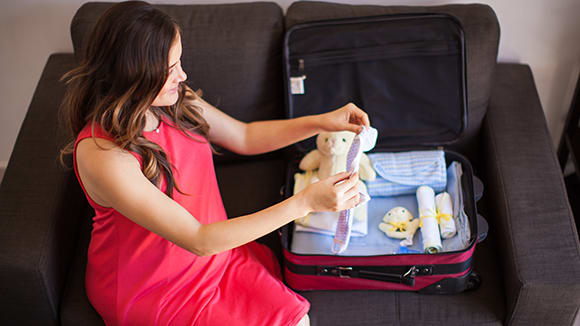Pelvic floor support
Common postpartum conditions, explained.
Article Author: Beverly Wong-Ken
Article Date:

It’s the day after a baby’s arrival into this world. The new parents are elated and exhausted. Family and friends are excited and eager to meet this new addition. While everyone is focused on the tiny bundle of joy, it’s also critical to remember mom’s health as she recovers from childbirth.
Regan Hill, MD, an obstetrician and gynecologist at Baptist Medical Center Nassau, provided insight on what women may experience after delivery and offered advice on how to strengthen the pelvic floor to prepare and properly heal.
What to expect
Dr. Hill outlined the three most common conditions women experience after delivery:
1. Perineum pain
“The perineum is the body tissue located between the vagina and rectum which contains very important muscles that help support the pelvic floor. During vaginal deliveries, the perineum becomes stretched, and sometimes tears,” explained Dr. Hill. “After delivery, many women experience pain, swelling and tenderness of the perineum, especially if a tear occurred. To help soothe this pain, women can apply padded ice packs and use pain-relieving spray and witch hazel pads. Soaking in a shallow bath, also called a sits bath, can also be very soothing. Perineal pain usually lasts for about three to six weeks.”
2. Urinary incontinence
“It’s very common to feel as if you’ve lost control of your bladder, otherwise known as urinary incontinence. This also occurs because the supporting pelvic floor muscles and ligaments are stretched during vaginal delivery,” Dr. Hill said. “The amount of time it takes for urinary incontinence to resolve is highly variable and depends on the number of times a woman has given birth and other factors. If it is going to completely resolve, it typically does so in about 12 weeks.”
3. Constipation
“Constipation can also occur postpartum due to pain medication and a decrease in fluid intake. For this reason, many women fear the first bowel movement after delivery,” Dr. Hill said. “Making sure to take stool softeners and staying well hydrated postpartum greatly ease this discomfort. Staying active by walking and performing pelvic floor exercises will help improve blood flow to these areas and speed healing.”
Supporting your pelvic floor
According to Dr. Hill, these conditions can all be a result of a weakened pelvic floor. This often happens during pregnancy because the muscle group isn’t being exercised the way it was previously.
“Doing pelvic floor-strengthening exercises like Kegels during pregnancy can lead to a more rapid recovery postpartum,” Dr. Hill said. “If there are signs of pelvic floor dysfunction during pregnancy such as incontinence, pain or bulging tissues, many times a referral can be made to a pelvic floor physical therapist.”
Support from your health care provider
Although these symptoms are common, it’s important to pay attention to your body and reach out to your health care provider for support when you need it.
“Perinium pain, bladder weakness and constipation are normal after delivery and should gradually resolve over time,” Dr. Hill said. “If you feel that your bladder isn’t emptying and it’s causing extreme pain, you’re unable to hold gas or stool, or are having pain and bleeding with bowel movements, contact your doctor.”
Pregnancy is hard, but you’re not alone. That’s why we created The Motherhood Space, which includes a free virtual video series led by maternal health experts to support you before, during and after pregnancy. Learn more at baptistjax.com/motherhoodspace.
If you are experiencing incontinence or pelvic floor issues, visit 4Her or call 904.202.4HER (4437) to find the right provider for you and make an appointment. To learn more about Labor and Delivery services, visit baptistjax.com/baby.



